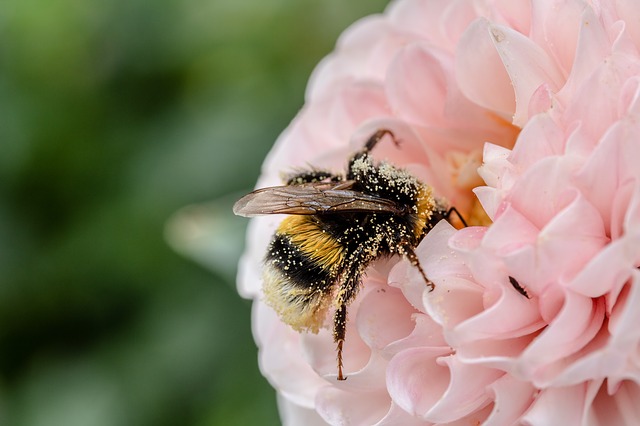
A. Avoid applying pesticides to blooming plants, or when conditions favor drift into areas with plants in bloom.
B. If you must spray plants in bloom, select a pesticide that is less toxic to bees (e.g. Bt, insecticidal soap, summer spray oil). Spot spray when possible to limit pesticide exposure risks
C. Apply pesticides only after flower petals have fallen, when plants are less attractive to bees. This will reduce the risk to bees coming in contact with pesticides.
D. Select pesticide formulations carefully to reduce risk. Dust (D), wettable powder (WP), flowable (F) and other formulations that leave visible powdery residues on plants are picked up by bees more easily than emulsifiable (EC) or soluble concentrate (SC) formulation. Follow any specific pesticide label requirements to protect bees.
E. Follow any specific pesticide label requirements to protect bees.
F. Read the package label to see if the pesticide contains a neonicotinoid insecticide with these active ingredients: clothianidin, dinotefuran, imidacloprid or thiamethoxam. Use these products after flower petals have fallen because they may be highly toxic to bees for several days after application.
G. Avoid applying these neonicotinoid insecticides by soil drench or tree injection methods to plants known to attract bees. These methods may contaminate nectar and pollen for some time after treatment.
H. If you must use a soil drench or tree injection to apply these neonicotinoid insecticides, do it after flower petals have fallen and use the lowest possible effective dosage to help reduce the risk to bees. Also, try to select an insecticide that offers the shortest persistence in ornamental plants while still controlling the pest.
Pesticides and Pollinators
gogreenpestcontrol.ca insectandrodentexterminators.com Ladner Tsawwassen. Delta. Randy Bilesky CPA RPF BsF
https://www.linkedin.com/pulse/pesticides-pollinators-randy-bilesky/?published=t